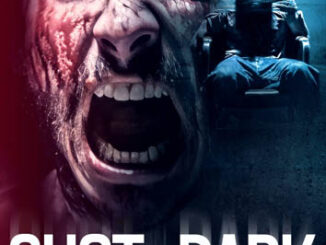Shot in the Dark (2021)
Directed by: Keene McRae
Written by: Keene McRae, Kristoffer McMillan, Lane Thomas
Starring: Austin Hébert, Christine Donlon, Keene McRae, Kristoffer McMillan
SHOT IN THE DARK (2021) Available to Stream Now
Trauma and catharsis are staple elements of the thriller genre. A good character arc is tough to be beat after all. Sticking to that sort of direct book ending structure is probably a wise choice for a first time director (though there are exceptions to that rule out there). But Keene McRae has two other writers and two editors on board, making this less a single vision and more of a series of ideas thrown together. Is this a chilling horror story inspired by true events, as the title cards suggest, or is it someone’s attempt to make an indie romance? There’s a lack of focus in all departments which means that the final product is less than compelling. But there are a lot of ingredients here; let’s take a look at which ones work.

The films that have inspired this bloody tale are also varied, and these influences are clear to see. Body parts in cardboard boxes and discussions about Madonna at a breakfast table are sure to make you think about other pop culture hits. Which may not be the best approach right out of the gate. Despite these references the first act is fairly cold and clinical, in tone and style. There are suicide attempts at a lonely cabin and friends discussing local crime in a detached manner. There’s no immediate sense of humanity and little charisma, although such things do develop later. This feels like an intentional choice at least; their lives have been changed by a tragedy two years earlier. There are no prizes for guessing what happened to missing artist Lili, (Christine Donlon) the wife of writer William (Kristoffer McMillan).
In fact beyond a fairly contrived twist ending there are a lot of predictable story beats, as the narrative flips between the past and the present. William is burnt out and barely speaks. He’s distanced himself from the other characters and often considers putting a gun in his mouth. Although for what it’s worth title doesn’t refer to his death. It’s all a bit sad and a bit spooky, but it’s not very engaging. As things progress the story of a serial killer looms on the horizon, until of course William finds himself trapped in a plastic covered basement. However just as things are getting interesting the structure of the film starts to break into disparate strands. There are various other sub-plots to cover before it gets to William’s escape.
One of these involves a pair of bored sounding detectives sitting at a computer while it searches for a finger print match. It’s not exactly a nail-biting procedural. Elsewhere William’s friends are at a party which offers little insight to their personalities. Most of them are tired of his dour attitude and have little else to talk about. These scenes are cut together with a lot of flashbacks which frequently undermines the suspense. Attempts to create a sense of mystery are just meandering instead of intriguing. This would all be a lot better if it was set in a single location, although it wouldn’t reach feature length that way. On the other hand the flashbacks themselves work surprisingly well when they’re allowed to breathe, which is a pity as the human drama beyond all the kidnap is far more interesting.

In the sequences set two years or more in the past things are greatly improved. Which is true not only of the character’s lives but the acting quality and the production values too. There’s a lot of naturalistic dialogue between William and Lili, whether it’s when they’re friends or when they’re arguing about married life. In this case I’ll take the believable acrimony over the fake blood and over-wrought suffering. Hopefully these two leads will find their way into another project together. The story comes together even here if the personality clash tropes are very simplistic. The sunsets and hazy lens flares are a stylistic cliché, but it’s competently done. There are even occasional match cuts that nicely bring the past and present together despite the overall lack of connecting tissue.
But once the couple reach reconciliation it’s all downhill from there. Which again is true for the characters and the film itself. Attempts to give the other cast members their own domestic issues come across as rushed and are never convincing. The party scenes are a constant annoyance by the end and offer no real characterisation or serial killer connections. The indie romance stuff becomes stale when it doesn’t concern the central couple and a lack of real development dooms the third act to failure. If they’re not in any serious danger at this stage then how is anyone in the audience supposed to feel concern? It’s an odd mixture when it starts to feel like two competing films mashed together, one of which is far better than the other.
Anyone looking for an exciting final escape or some kind of cathartic ending will be sorely disappointed. The motives are the villain are totally missing, replaced instead by an attempt to be clever in the closing scenes. As a result it’s hard to take this seriously as a movie about grief or loss. Which is a shame because there’s clearly some talent involved; when the warmer human elements are allowed to shine. There’s more polish in the cosy nostalgic moments than the ones featuring so much gruesome brutality. It feels like the editors, and at least one of the writers, had different ideas of what worked and the outcome is often a mess. Ultimately it’s a case of something that tries to please more than once person, behind the camera and in front of it, which means it’s unlikely to satisfy anyone.





Be the first to comment